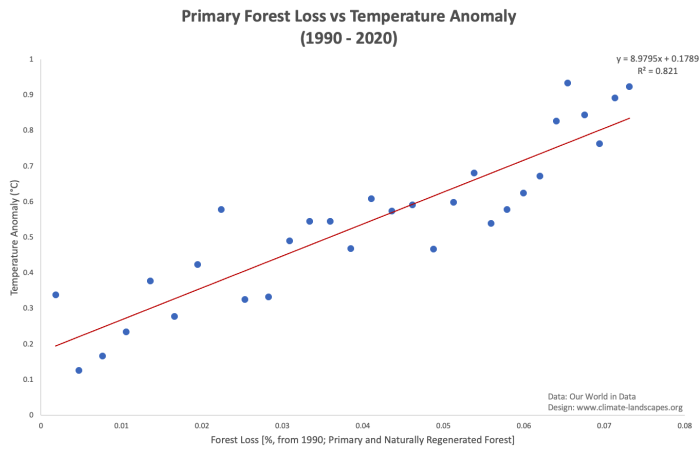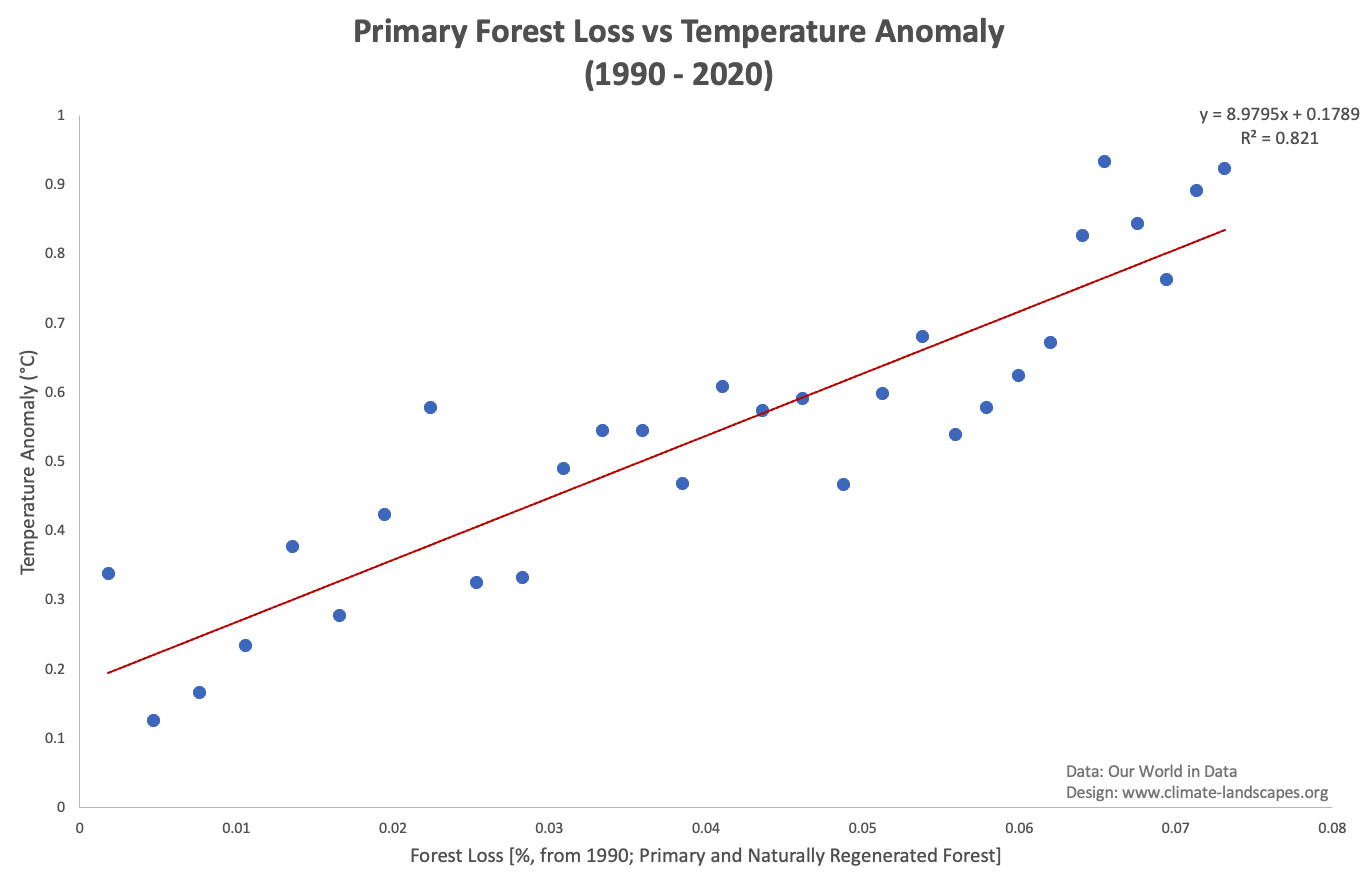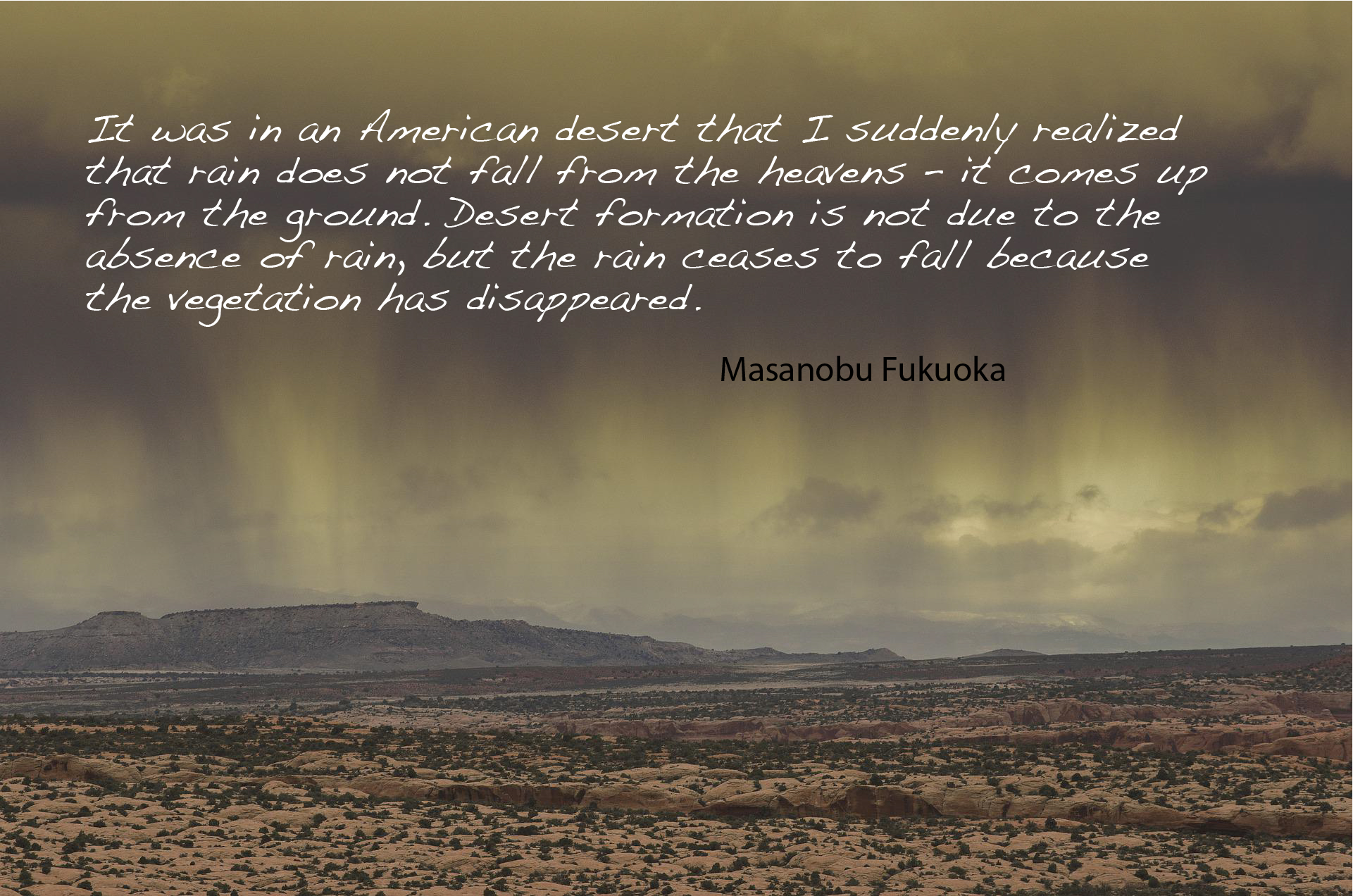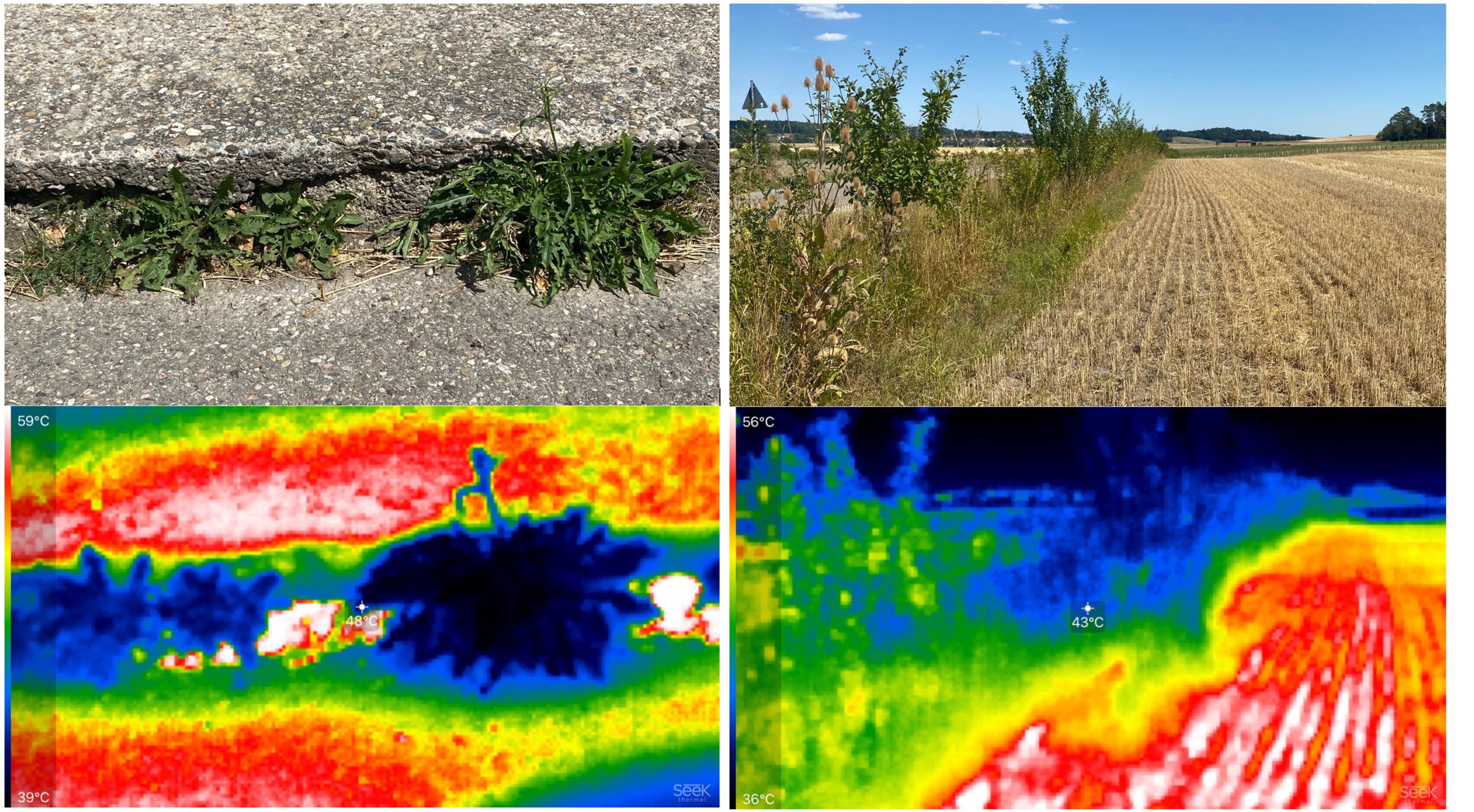As the only accepted narrative on global warming is the one on CO2 (and other GHG), I wonder since a couple of years what the influence disappearing vegetation, especially deforestation, in conjunction with bare soils, and its disruptions of the small water cycle has on the changing climate. Vegetation means transpiration, which leads to a cooling effect within the ground layer (we need that!), and the transfer of that stored energy in the water vapour into higher parts of the atmosphere (which is beneficial). Here, when released, some of it (some people say up to half) disappears into outer space (which is good for climate cooling). The condensation means clouds are being created, which reflect incoming radiation (another positive effect). Clouds mean it can bring rain (which is more and more missing in its usual regularity around the world). Vegetation actually emit biogenic aerosols, which help to create these clouds at lower atmospheric levels, creating more rapid and more regular rain (another important benefit). And there is more to it (see links below).
Now, a funny (?) thing:
When looking on CO2 concentration and global temperature anomaly, we see a strong correlation:

However, the interesting thing is, that we see the same correlation between the loss of primary (and naturally regenerated) forests (which are the most important drivers of the small water cycle) and the temperature anomaly:

This is not to say that the CO2-narrative is wrong. I am convinced that we must urgently stop emissions and try to store emitted CO2 in soils and vegetation. But I wonder what influence the disappearance of natural forests, the increasing amount of bare soil and surfaces (asphalt, beton, buildings), the loss of water retention and storing capacities in the landscape and the according changes in the energy redistribution/balance/transport has on climate change.
More and more research shows that this is not negligible (see articles in my blog), but could even prove to be a major factor.
Interesting additional links:
















